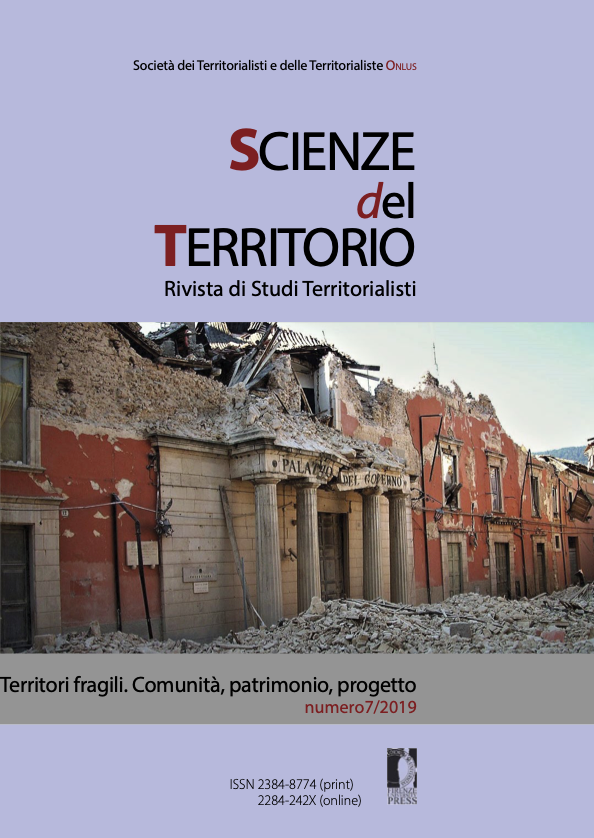Grandi opere per ri-disegnare il territorio terremotato. Il “QuakeLab Center Vettore”, paradigma della strategia d’investimenti
Published 2019-12-27
Keywords
- regional programming,
- participation,
- local development,
- inland areas,
- post-disaster
How to Cite
Abstract
Despite the delays and contradictions that characterised the first two years of post-earthquake in the Italian central Apennines, the public funds allocated to both material reconstruction – public and private – and to the economic and employment recovery of the areas affected by the earthquake are considerable. But the governance guidelines that are re-designing the territories and the model of territorial development in the inland areas hit by the earthquake seem to repeat the top-down dynamics typical of emergency. Starting from the case of Regione Marche (about 70% of cities struck by the earthquake and, consequently, the one which received a greater share of funding), the cognitive component of the institutional path (Nuovi sentieri di sviluppo) and that of governance (Patto per la ricostruzione e lo sviluppo) will be analysed in detail, highlighting the market-oriented and verticalist matrix of the instruments. The case of the QuakeLab Center Vettore will therefore be presented as an example of the political, economic, governance and scale criticalities of the post-earthquake development process.


